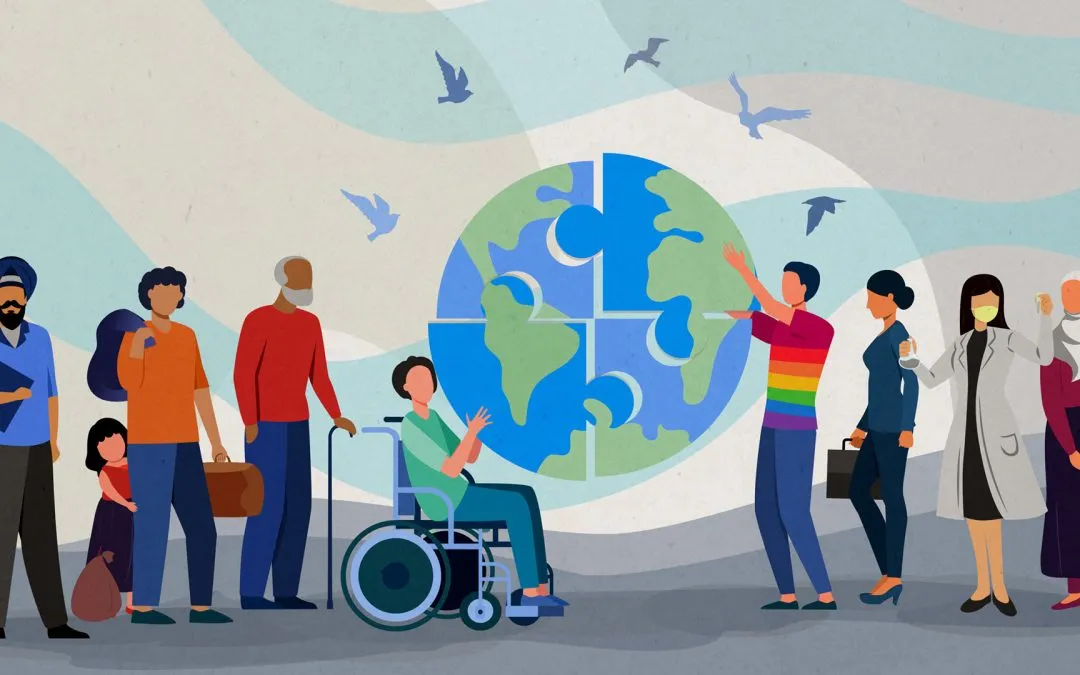Walk into any building, restaurant, or office, and you probably don’t think twice about how you got there—climbing a few steps, reading a sign, opening a heavy door. But for millions of people with disabilities, these small everyday moments can turn into exhausting obstacles. And that’s exactly why disability inclusion is not just important—it’s essential. Accessibility isn’t a favour. It’s a right that gives every individual the dignity and independence they deserve.
The first step to real inclusion begins with our spaces. Ramps, tactile paths, accessible restrooms, elevators that actually work—these shouldn’t be “special features.” They should be as normal as having a door or a window. Yet, many places still treat accessibility as an optional upgrade. When we design a building that welcomes everyone, we aren’t just helping a few people—we’re creating a world where nobody is left waiting outside. Universal design helps parents with strollers, elderly people who can’t climb stairs easily, and even someone recovering from a fracture. Accessibility doesn’t exclude; it expands possibilities.

But inclusion isn’t only about physical spaces. It’s also about how we speak and think. Inclusive language is one of the simplest yet most powerful ways to show respect. Saying “a person with a disability” instead of reducing someone to a label honours their identity, their personality, and their story. The words we choose shape the way we see people—and the way they see themselves. A little intentionality goes a long way.
Human connection, however, can get tricky. Many of us instinctively want to help when we see someone struggle, but good intentions sometimes carry hidden assumptions. Offering help is kind, but assuming help is needed can feel disempowering. The simplest way to be thoughtful? Just ask: “Would you like any assistance?” That one sentence gives a person control over their own experience. It shows that we respect their independence as much as their comfort.

Workplaces are another place where inclusion is either strengthened or lost. Imagine being talented, qualified, and hardworking—yet unable to enter your office, use your software, or move around your workspace. Inclusive workplaces are not just physically accessible; they are culturally welcoming. Flexible hours, accessible technology, unbiased hiring—these are not “adjustments”; they are investments in people. When employees feel supported for who they are, not in spite of who they are, their creativity and confidence naturally rise. Inclusion isn’t charity—it’s smart leadership.
A powerful shift happens when we stop comparing differences and start celebrating abilities. Everyone has strengths—some visible, some quiet, some extraordinary. The goal is not to measure people against each other but to value what each individual brings to the table. When society becomes more focused on potential than limitation, people feel encouraged to participate fully and unapologetically.

And representation—perhaps the most transformative of all—helps this shift take root. When people with disabilities see themselves in films, ads, boardrooms, classrooms, and public spaces, it sends a powerful message: “You belong here.” Representation isn’t just visibility; it’s validation. It inspires confidence not only in those who identify with it but in everyone else who learns to see disability as a natural part of human diversity.
At the heart of it all is a truth we often forget: inclusion benefits everyone. When our world becomes more accessible, it becomes kinder, more flexible, more understanding. Inclusion teaches empathy. It encourages creativity. It strengthens communities. It creates a society where people are not defined by what they lack but celebrated for what they bring.



